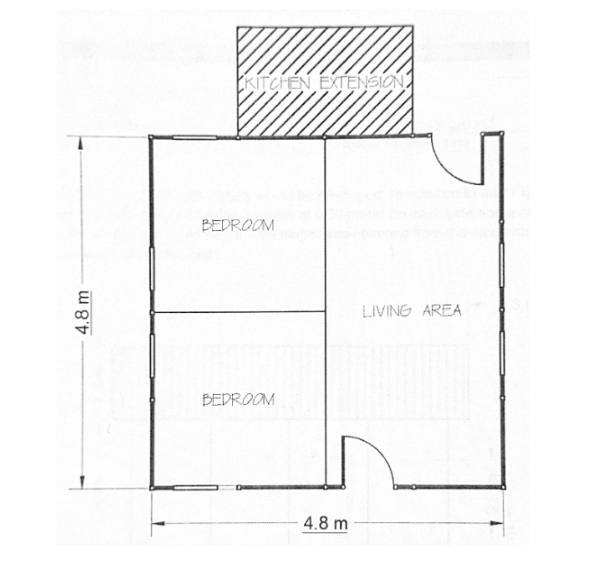In 2014, the UP Building Research Service undertook a project in collaboration with the Department of Science and Technology – Philippine Council for Industry, Energy, and Emerging Technology Research and Development (DOST-PCIEERD) to develop a temporary shelter system that could be deployed in areas affected by natural hazards. The design of the shelter was multi-faceted, taking into account architectural and social considerations based on humanitarian needs, as well as the engineering integrity of the structure. Other parameters considered in the design included material availability, cost, and the ease and duration of construction or installation.
The temporary shelter has a total floor area of 4.88 meters by 4.88 meters (23.78 sq. m.), sufficient to accommodate two (2) bedrooms, a living area, and a kitchen extension located outside the main structure. Six (6) windows were strategically placed around the perimeter of the shelter to provide ventilation, facilitate proper airflow from outside to inside, and meet the minimum window opening requirements. Two (2) doors were included to ensure better accessibility and compliance with applicable standards.

The materials used in the design were carefully selected to satisfy both the structural safety and integrity of the shelter, as well as the insights and needs of the surveyed residents. Primary consideration was given to good ventilation; hence, the integration of materials, such as Sawali and PP Hollow Sheet. The goal to minimize cost while attaining the structural safety of the shelter was achieved, optimizing its cost to around Php 150,000.00 at the time. Furthermore, the said temporary shelter can be dismantled and reused, with a usable life of up to five (5) years and usability of 2-3 times.
